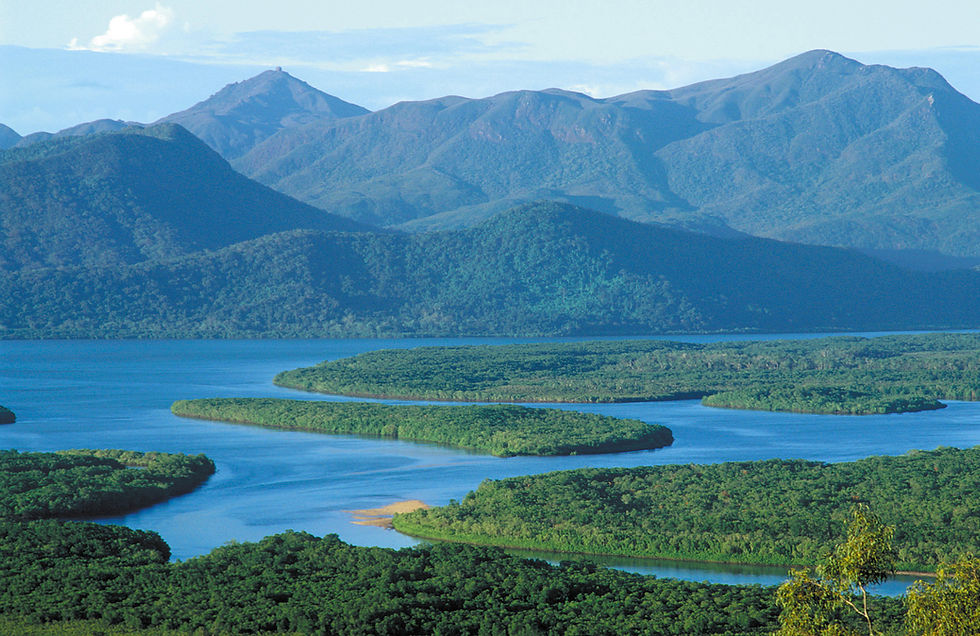Australian Mangroves and why they are so important
- Jan 13, 2018
- 2 min read
Australia has approximately 11,500 km2 of mangroves, primarily on the northern and eastern coasts of the continent. Areas where mangroves occur include the intertidal zone of tropical, subtropical and protected temperate coastal rivers, estuaries, bays and marine shorelines. (https://en.wikipedia.org/wiki/Australian_mangroves)

Hinchinbrook Island, North Queensland, Australia
Commonly the term “Mangroves” is used in two different contexts:
A tidal swamp ecosystem found in tropical inlets, estuaries, lagoons or islands
The characteristic tree species populating this ecosystem.
Mangrove trees have developed unique adaptations to the harsh conditions of coastal environments.
Like coral reefs, mangrove forests are extremely productive ecosystems that provide vital benefits not only to the marine environment. The importance of trees is taught to us at a young age — they filter the air we breathe by converting carbon dioxide to oxygen. But how important are mangroves?
Just like their land-locked relatives, mangroves filter the air, but their importance to the environment goes beyond that. Not only do they filter the air and the oceans, mangroves provide shelter for a range of species who make their home in mangroves, for example prawns, fish, crocodiles, dugong, birds and even turtles. Without mangroves, those species are likely to disappear.
Further, in a cruel irony, those places where human settlements have replaced mangroves entirely are now more susceptible than ever to damage. This is because intact mangrove forests help in reducing flooding and coastal erosion (Wetlands International, 2018). Had more responsible development taken place, ecosystems would have been spared and the (human) built environment would have notably greater resiliency.





Unfortunately Australia is losing its valuable mangroves to coastal development and rising sea levels. Keeping an eye on the health of all those that remain is no easy task. Therefore researchers from the University of Queensland, Australia, are getting the public in on the act.
So there is hope: the Mangrove Watch Project trains local people from sailing enthusiasts to farmers to Volunteers to video the shoreline and estuarine mangroves from boats. Those videos are analysed by researchers and volunteer students to establish a baseline of mangrove health. Repeating the process means changes in health - due to climate change, pollution and Global Warming, for example - can be monitored over time.
“Climate change has accelerated the change in attitude. More and more credence is being given to mangrove swamps for their vital role in the ecological health of the coast, therefore they need preserving and protection.” Dr Norm Duke (MangroveWatch, 2018)

More than 35% of the world’s mangroves are already gone. The figure is as high as 50% in countries such as India, the Philippines and Vietnam. In America they are being cleared at a faster rate than tropical rainforests.
“Australia’s mangrove habitats are influenced profoundly and decisively by human attitudes of the day where different communities have quite distinct management practices. Such practices closely match cultural attitudes to reflect current socio-economic pressures combined with community awareness of the benefits and vulnerability of mangroves.
Over time, these can, and must, alter and adapt to reflect new or anticipated conditions – especially if we wish to preserve and sustain the rich natural heritage of mangroves in Australia.” (MangroveWatchAustralia, 2018)

Australian Aborigines hunting
References
Mangrove Watch Australia, 2018. Accessed: 13.01.2018. http://www.mangrovewatch.org.au/index.php?option=com_content&view=category&layout=blog&id=26&Itemid=300161
Wetlands International, 2018. Tonneijck, van Wesenbeeck & Spalding: “How mangroves help in reducing flooding and coastal erosion”. Accessed 13.01.18. https://www.environmental-expert.com/articles/how-mangroves-help-in-reducing-flooding-and-coastal-erosion-401349
Wikipedia, 2017. Accessed: 13.01.2018.

Commenti